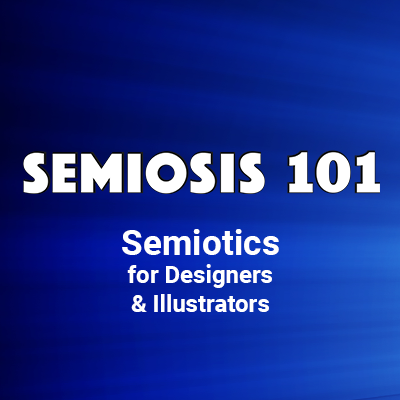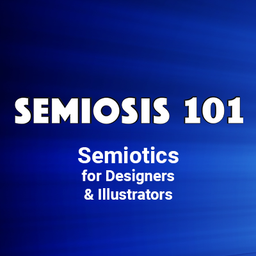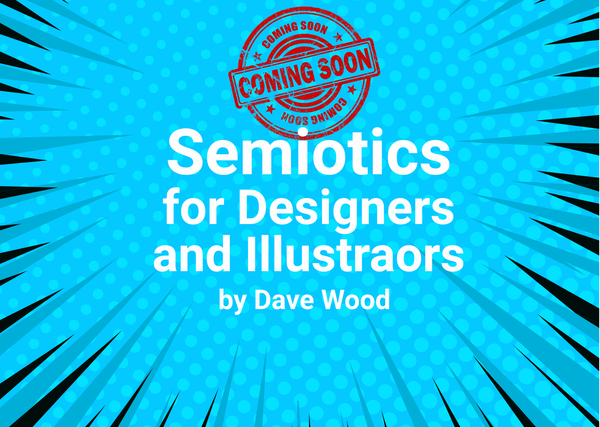BLOG 20: Semiotic Contextual Meaning and Lifeworlds

Semiosis 101 - 5 minute semiotic read
To effectively visually communicate the intended messaging in your illustrations or designs needs your audience. You cannot visually communicate blindly. How many times in our creative life have we quickly sketched something and then shown it to someone, only to hear “what is it?” In our development as children many people have stalled their own creativity because they have had a negative reaction to their nascent attempts at visual communication.
We’ve all heard adults apologise that “sorry, I cannot draw” by which they mean “I apologise I am not Michelangelo.” Someone in their past has convinced them they cannot draw. This is their lived experience. This is their prior experience. This is a phenomenological aspect of their lifeworld. However, the same lifeworld also contains many prior experiences they draw on (pun intended) when interpreting your aesthetic work.
Remember Peirce says,
“nothing is a [semiotic] sign until interpreted as a sign.”
Your audience’s interpretation is triggered by their perception of possible meaning-bearing visual elements in your visual language. Their perception is triggered by your
visual language decisions employing qualities, familiarity, resemblances and possibilities which socio-culturally resonate with their own reference points. Pragmatically, these qualities are things already known to the target audience from within their lifeworlds.
In their lived experiences your audience have encountered similar qualities which they then draw on to make sense of what you are visually communicating. This is a phenomenological position. We can quantify our world with data (lengths, widths, mass, weights, etc.) But quantification will not explain the esoteric and existential qualities of human lived experience. We need to turn to psychology, philosophy and phenomenology to understand lifeworlds.
We cannot quantify a quality. As designers and illustrators, you are tasked every working day to visually communicate to irrational, subjective and emotional humans. You are illustrating and designing as much for your audience’s heart as for their minds.
You may think that your working relationship is only directly with your client. But your working relationship is wider than that as it proactively involves your target audience. Every experience has a quality, a phenomenological essence, which humans store away in their memory. This can be triggered to help understand new phenomena when encountered.
A phenomenological framework provides you with a philosophical space in which to explore your target audience’s lifeworlds. In Semiosis, phenomenology provides you with a communicational situation during your ideation where you can visually test your visual language decisions against audience lifeworlds. The audience’s prior reference points emerge from understanding their lifeworlds.
Understanding this changes the dynamic of the power of your aesthetic from a client/creative bias, to how the audience will interpret what they see. It is in that power shift that Peirce’s sign-action (Semiosis) can effectively help you strengthen your illustration’s or design’s aesthetic perception and interpretation by your target audience.
Pragmatists reject a reality that is independent of the human mind. So, an act of interpretation is drawn from the audience’s contextual reality. Contextual meaning is constructed from the audience’s prior lived experiences. Therefore, the audience will interpret what you visually communicate from these socio-cultural prior experiences.
We have all at some point found what we intend to visually communicate in fact miscommunicates. Semiosis and understanding lifeworlds helps you to reduce miscommunication.
Remember, whatever you design or illustrate will immediately be competing for attention amongst all the other visual ‘noise’ of 21st century existence. Phenomenology helps creatives to find appropriate hooks into the attention of their target audience.
The audience’s lifeworld/lived experiences with the concept is an exploratory internal/external interaction of visual possibilities. These possibilities may become visual shorthand to things that the audience are familiar with already, through sketching.
This is where your early sketching meets Peirce’s first phenomenological level of Iconic representation of a concept. Using Abductive reasoning (as a working Hypothesis) will reveal socio-cultural clues and insights to qualities that the audience may associate with the concept you semiotically are trying to visually communicate.
How you decide to shape your visual language pragmatically will semiotically structure how the sign-action represents the concept. I cover more of this in my 2026 Semiotics for Designers and Illustrators book and in many Semiosis 101 episodes - so check out the Lifeworld playlist on YouTube.





